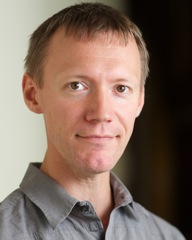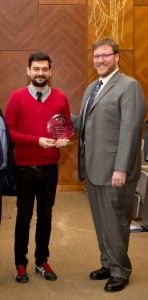The Department of Computer Science is seeking a new staff member to fill the position of Faculty Support Staff to serve the department in the DGP lab. This is a wonderful opportunity to join a vibrant lab and department with an outstanding interdisciplinary and international culture. Please see the U of T job posting for information about the position, and how to apply.
Blog Archives
Welcome new Graduate Students
The DGP is happy to welcome the incoming class of graduate students to the lab: Ryan McDonald, Raymond Lei, Rabia Aslam, Rinat Abdrashitov, Haijun Xia, and Liviu-Mihai Calin. Welcome to the lab, and best of luck with your research!
DGP Welcomes Visiting Professor J. Andreas Bærenten
|
J. Andreas Bærenten, associate professor of computer graphics at the Technical University of Denmark is visiting the DGP for the next year. Andreas notes: My research area is computer graphics with emphasis on the digital representation of shape. In particular, I investigate shape representation and manipulation methods for applications such as interactive sculpting, simulation and modeling of dynamic phenomena, procedural synthesis of 3D models, and the creation of digital prototypes. I am also interested in many aspects of real-time graphics. Welcome Andreas! We look forward to a long and productive collaboration. |
 |
Wigdor and Jota Named U of T Inventors of the Year
The University of Toronto’s Research and Innovation Office created the Inventor of the Year awards program in 2011 to celebrate the innovative work taking place at the U of T, and to recognize the direct impact the resulting inventions have on society.
|
Pictured are Ricardo Jota (left) and Daniel Wigdor (right); photography by Jenna Muirhead. |
This year’s group of 10 honoured projects included Human-Computer Interaction work by DCS faculty member Daniel Wigdor and Postdoctoral Fellow Ricardo Jota. Their citation reads: “[Wigdor and Jota’s] invention, created in collaboration with co-inventors Dr. Clifton Forlines (VP of Software, Tactual Labs) and Mr. Steven Sanders (Co-President, Tactual Labs), is the Input Processing Unit (IPU), which reduces end-to-end latency to less than 10ms. They can achieve this by generating the response to user input in computer hardware, rather than relying on application software to provide this response, as in traditional systems. This is accomplished while also achieving two critical goals. First, the responses are in context, so that the user believes it is the application itself that provides them. Second, there is no appreciable difference in writing applications for our system than writing for traditional tools. The invention has been spun out as Tactual Labs, which, in partnership with U of T, is continuing to develop the technology.” DCS has been recognized by the Inventor of the Year award since its inception: past winners include Nick Koudas (2011) – with Nilesh Bansal, Ron Baecker (2011) – with Alex Levy, Aakash Sahney, and Kevin Tonon; and Eyal de Lara and Mike Brudno (2012) – with Andres Lagar-Cavilla, Adin Scannell, Joseph Whitney. More information about the 2013 awards can be found here. The U of T Research and Innovation Office announcement can be found here. Congratulations, Daniel and Ricardo! |
Â
Michael Glueck to Receive GI Best Student Paper Award
We learned this morning that Mike Glueck‘s paper, A Model of Navigation for Very Large Data Views, has been selected for the Michael A.J. Sweeney Award for best student paper at GI 2013. Congratulations to Mike, and his co-authors, Tovi Grossman of Autodesk and Prof. Daniel Wigdor.


